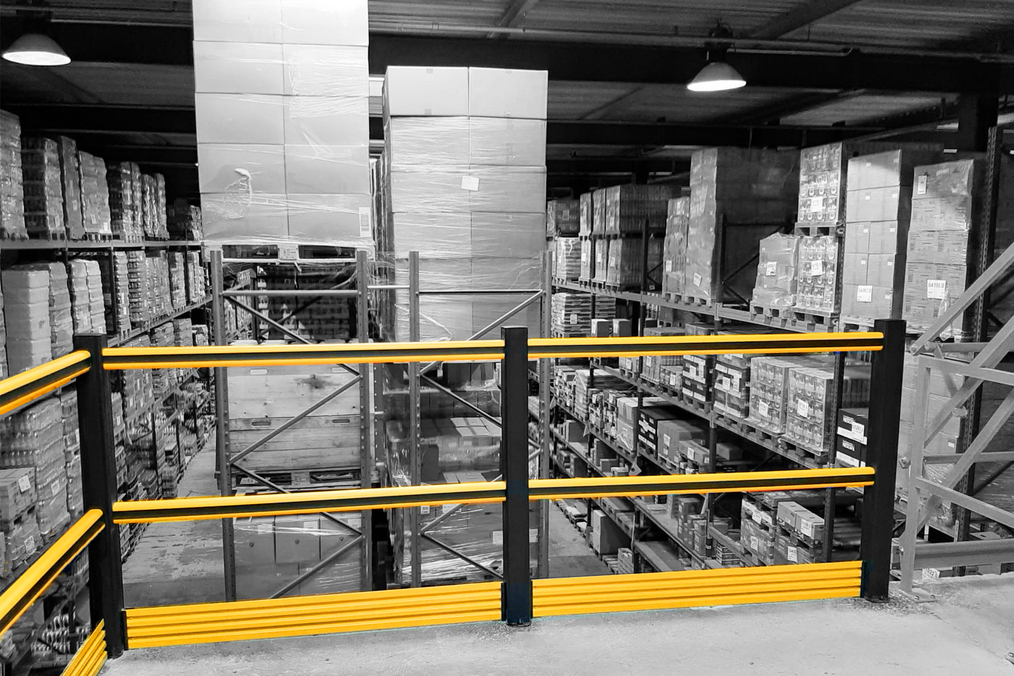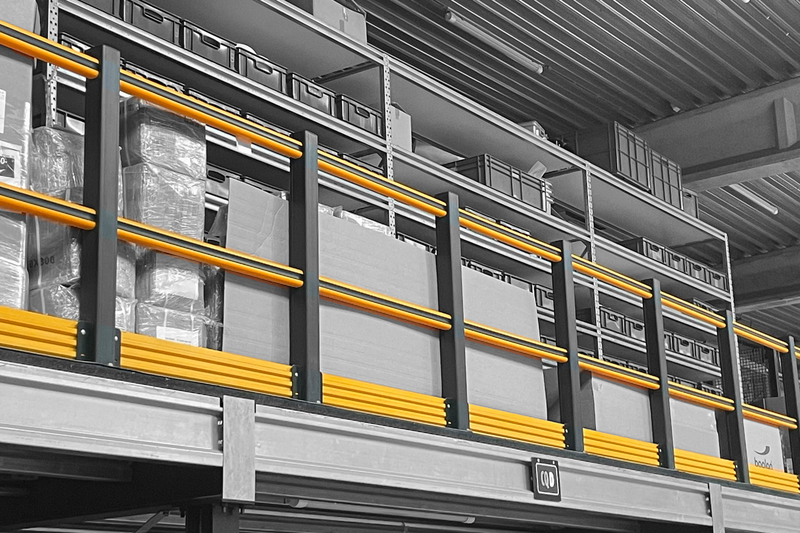What risks are linked to falling objects?
The risk of falling objects is a significant concern in the industrial sector. The dangers are evident: best-case scenario is material damage; worst-case scenario is human injury. Fortunately, there are numerous safety measures available to mitigate this risk. Learn about the risks of falling objects and get tips on how to prevent them in your workplace.

What causes objects to fall?
Workplace accident statistics reveal that falling objects are among the most common accidents, particularly in industrial environments like warehouses. This is due to the constant effect of gravity. When the support fails, the object will fall. For instance, if an object is placed on an inclined surface without solid support, gravity will cause it to fall.
Several factors can increase the risk of falling objects:
- Warehouses are often bustling environments. The need for quick movement can lead to unsafe stacking of products.
- Limited space means goods are often stacked vertically. Unstable stacking of goods constitutes a major risk.
- Poorly installed equipment or infrastructure can come loose, tip over, or collapse due to time pressure or lack of attention.
- Materials, tools, and debris can also fall.
These accidents can result in personal injury and damage to infrastructure and machinery.
What causes objects to fall?
Falling objects have a significant economic impact on an organization, including medical costs and compensation for employee injuries. Additional financial compensation may be required, and there is a risk of incurring claims due to non-compliance with safety measures. This can result in property damage, such as broken goods, especially when working with glassware. Existing infrastructure like walls, floors, doors, and windows can also be damaged.
Additionally, falling parts, tools, and loads can cause serious injuries. These injuries range from shock to physical harm like wounds, fractures, and trauma. Falling chemicals can cause burns and infections that require medical treatment. This is costly and often results in long-term absenteeism. In extreme cases, accidents can lead to permanent disability or even death. This must be avoided at all costs. How?
What steps can be taken to minimize the risk of falling objects?
It is essential to implement various safety measures to reduce the risk of falling objects. This includes:
- Mapping out the warehouse layout
- Marking high-risk areas
- Posting clearly visible warnings.
Training workers, regularly inspecting equipment, and using personal protective equipment like helmets, gloves, and proper footwear are also essential.
However, prevention alone isn't enough. It's also important to invest in collective protection measures. Polymer safety solutions like barriers, bollards, and handrails are designed to prevent goods from falling unexpectedly. Kick rails prevent goods from sliding under protective fencing. Additionally, it's important to install corner protection, column protection, and rack protection to prevent rack damage and collapse during collisions.
